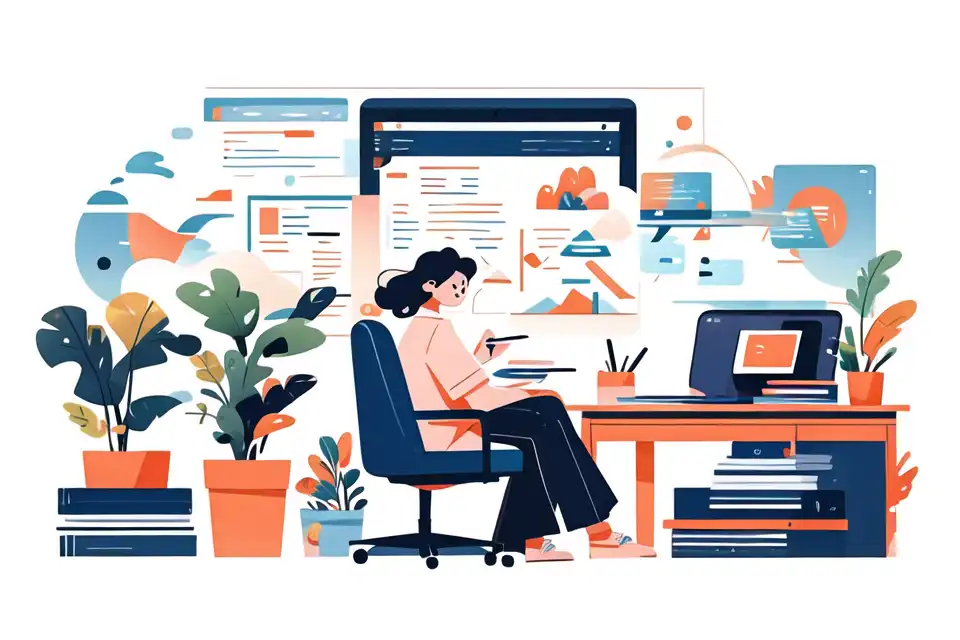How to Handle a Client Complaint Professionally
Master the art of professional communication in business settings with expert guidance. Learn how to handle a client complaint professionally.
Try Lark for Free
Resolving client complaints professionally is a crucial aspect of maintaining positive relationships and ensuring business success. This article aims to provide practical and effective strategies to handle client complaints professionally, transforming challenging situations into opportunities for building trust and enhancing client satisfaction.
Why understanding how to handle a client complaint professionally is important
Navigating client complaints professionally is essential for businesses across all industries. Here's why understanding the art of handling client complaints professionally is indispensable:
Maintaining Client Loyalty
Resolving complaints professionally fosters trust and loyalty, reassuring clients that their concerns are valued and will be addressed effectively.
Protecting Brand Reputation
By handling complaints with professionalism, businesses can safeguard their reputation and demonstrate a commitment to customer satisfaction and quality service.
Identifying Areas for Improvement
Addressing client complaints professionally provides businesses with valuable insights into areas that may require attention, enabling them to enhance their products or services continually.
Use Lark Messenger to elevate your team communication.
Practical examples of dealing with how to handle a client complaint professionally
Example 1: uncovering client frustrations
Example 1: uncovering client frustrations
Scenario: Failure to acknowledge a client’s concerns promptly, leading to escalated frustrations.
Common Mistakes: Ignoring or downplaying the severity of the complaint, which can exacerbate the client's dissatisfaction.
Best Expression: "I understand your concerns and assure you that we will resolve this issue promptly."
Example 2: handling misunderstandings
Example 2: handling misunderstandings
Scenario: Miscommunication resulting in mismanaged client expectations.
Common Mistakes: Blaming the client or disregarding their perspective, which can strain the relationship further.
Best Expression: "Thank you for bringing this to our attention. Let’s work together to find a satisfactory resolution."
Example 3: service delivery shortcomings
Example 3: service delivery shortcomings
Scenario: Client dissatisfaction due to service delivery shortcomings.
Common Mistakes: Providing generic responses or failing to take ownership of the situation.
Best Expression: "We apologize for the inconvenience caused. We are committed to rectifying this and ensuring it doesn't happen again."
What are the consequences of not knowing how to handle a client complaint professionally
Loss of Client Trust
Failure to handle complaints professionally can lead to a loss of trust, potentially resulting in clients seeking alternative service providers.
Negative Word-of-Mouth
Unsatisfactory handling of complaints may prompt clients to share negative experiences with others, impacting the business's reputation.
Missed Improvement Opportunities
Not addressing complaints effectively may result in missed opportunities to identify and rectify operational or service gaps and improve overall business performance.
Learn more about Lark x Communication
Use Lark Messenger to elevate your team communication.
Methods of phrasing how to handle a client complaint professionally
Method 1: Acknowledgment and Understanding
- Express genuine empathy and understanding towards the client’s concerns.
- Acknowledge the inconvenience caused and assure the client that their perspective is valued.
Method 2: Transparent Communication
- Clearly communicate the steps that will be taken to address the complaint.
- Provide realistic timelines for resolution and keep the client informed of any progress.
Method 3: Follow-up and Feedback
- Conduct follow-ups post-resolution to ensure the client's satisfaction.
- Encourage feedback as a means to enhance the overall client experience.
Do's and dont's when you don't know how to handle a client complaint professionally
| Do's | Dont's |
|---|---|
| Always acknowledge the client's concerns. | Avoid getting defensive or confrontational. |
| Demonstrate empathy and understanding. | Disregard the client's emotions or perspective. |
| Communicate transparently and proactively. | Make promises that cannot be kept. |
| Take ownership of any mistakes made. | Blame the client for the issue at hand. |
| Follow up to ensure the client's satisfaction. | Disregard the client's feedback or concerns post-resolution. |








